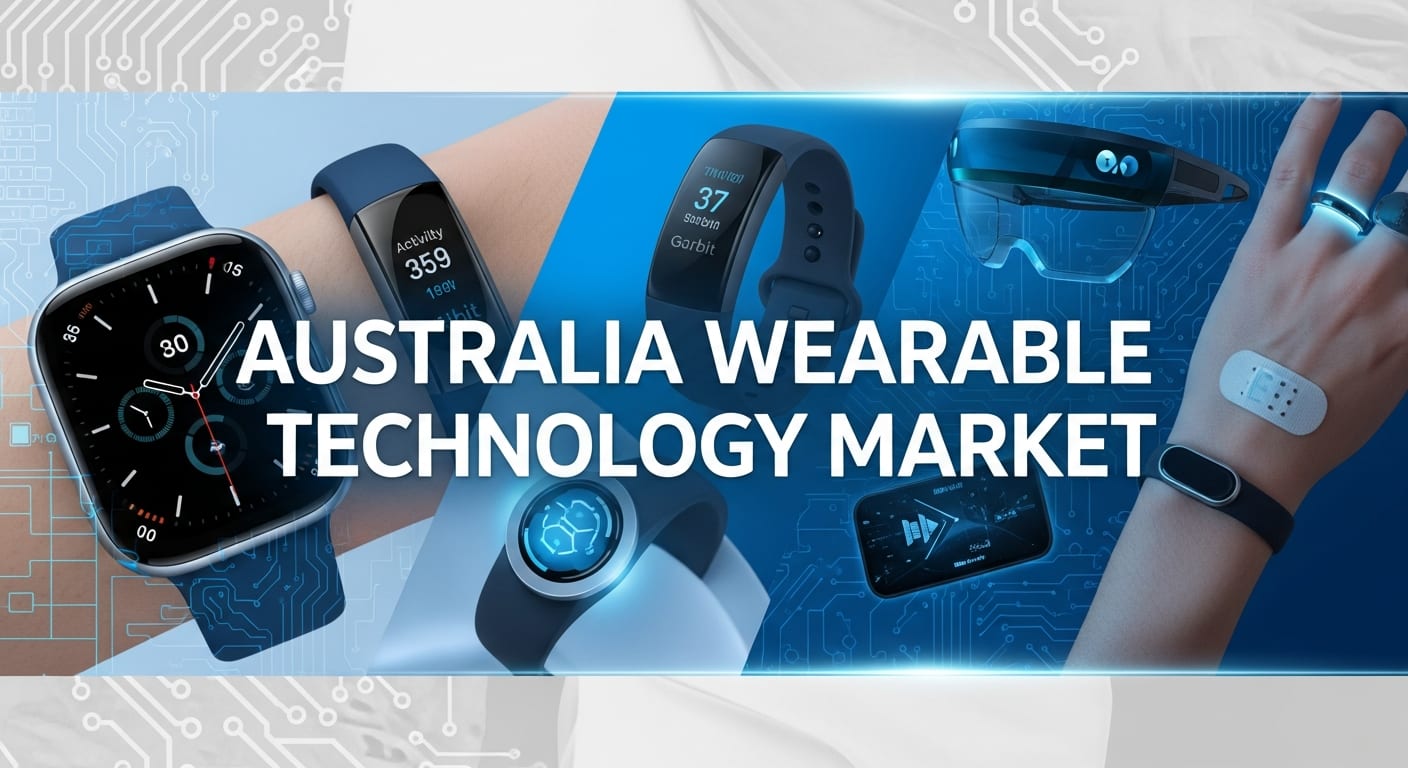Australia wearable technology market is set to expand rapidly, driven by increasing consumer demand for connected devices, health and fitness tracking, and lifestyle tools. Globally, IMARC Group reports the wearable technology market was valued at USD 72.5 billion in 2024, and is expected to reach USD 200.8 billion by 2033, growing at a CAGR of ~13.6% from 2025-2033. While a specific Australia-only figure is not publicly cited in the free summary, the Australian market is clearly benefiting from the global momentum and local consumer behaviours.
Why the momentum is strong in Australia
Several factors are playing into the adoption of wearable tech here:
• Health & fitness awareness: Australians are increasingly tracking wellness, activity, sleep and biometric data through smartwatches and fitness bands. The push for preventive health and wellness technology is boosting demand.
• Technology convergence: Better sensors, longer battery life, 5G connectivity and seamless smartphone-integration mean wearable devices are more capable, more convenient, more appealing.
• Lifestyle & entertainment crossover: Wearables aren’t just fitness tools anymore. They tie into gaming, smart home, celebrity-endorsed fashion, and social identity—triggering broader appeal beyond just early adopters.
• Local market readiness: With high smartphone penetration, strong online retail infrastructure and a population that embraces new tech, Australia offers fertile ground for wearables to scale.
Market segmentation & key dynamics
While the detailed Australia breakdown is limited publicly, IMARC’s global wearables segmentation gives us useful insight (applicable to Australia’s context):
• By Product: Wrist-Wear (smartwatches, fitness bands) leads; Eye-Wear & Head-Wear (smart glasses), Foot-Wear, Neck-Wear, Body-Wear are emerging.
• By Application: Consumer electronics dominates, with healthcare, enterprise/industrial wearables gaining ground.
• By Region: Asia-Pacific (including Australia) is a significant growth region due to tech adoption and rising disposable incomes.
In Australia specifically, the wrist-wear segment (smartwatches/fitness trackers) is likely the largest share—mirroring global patterns—while health wearables (heart rate monitor, sleep trackers) and lifestyle/gaming wearables (e.g., VR controllers, gaming headsets) are rising.
What the Opportunities Are
The Australian wearable tech market offers multiple attractive opportunities:
• Health & Fitness Tech Integration: Brands and device makers that combine wearables with health apps, subscription services, diagnostics, and wellness ecosystems have a strong chance. As consumers seek not just devices but insights and solutions, this presents growth.
• Gaming & Entertainment Wearables: With tags like “gaming” and “celebrities,” wearable tech that taps into immersive entertainment (VR/AR headsets, gaming-enabled wearables) or styles endorsed by celebrities can capture younger, tech-savvy segments.
• Fashion + Technology Blends: Wearables that look good, brand-led, celebrity endorsed or collaborated with fashion houses can bridge the gap between tech utility and lifestyle identity.
• Industrial & Health Sector Growth: Beyond consumer electronics, enterprise and healthcare wearables (remote monitoring, worker safety, elder care) show potential. In Australia, ageing population and remote health delivery add to this.
• Regional & Remote Market Penetration: Australia’s large geography includes remote and regional populations. Wearables that support remote health, fitness or connectivity can tap underserved markets.
• Local Innovation & Manufacturing: Australian tech companies and startups that develop niche wearables (e.g., fitness for surf/skate culture, Indigenous health wearables) can carve out differentiated positions in global supply chains.
• Jun 2025: A major Australian retailer launched an exclusive collaboration with a global smartwatch brand offering Australian-specific features — such as surf-condition tracking and UV-index alerts — tapping the local lifestyle market.
• Aug 2025: Gaming headset manufacturer introduced a wearable AR-glasses product in Australia, targeting esports fans and early tech adopters; the launch featured an Australian celebrity gamer as brand ambassador, showing lifestyle crossover.
• Oct 2025: Data released by a national consumer research body revealed that wearable devices penetration in Australia increased by +19% year-on-year in H1 2025, with wrist-wear accounting for more than half of new device uptake and females aged 25-40 showing the fastest growth.
Why Should You Know About Australia Wearable Technology Market?
You should know about this market because it sits at the intersection of technology, lifestyle, health and entertainment—four major forces shaping consumer behaviour in Australia today. Whether you’re a brand strategist, investor, tech entrepreneur or just a keen observer of changing patterns, wearables offer a lens into where consumer demand is heading: faster connectivity, smarter health metrics, lifestyle integration, and wearable devices becoming part of the identity, not just the toolkit.
For investors or companies, the market signals high potential: strong growth rates globally, an Australian market ready to adopt, and multiple entry paths—from consumer electronics to health, gaming, remote connectivity. For tech talent, wearable tech suggests opportunities in sensor development, integration services, app ecosystems, and even fashion-tech crossovers. For everyday users, it signifies how devices will increasingly blend into daily routines, enhance wellbeing and become stylish statements.
